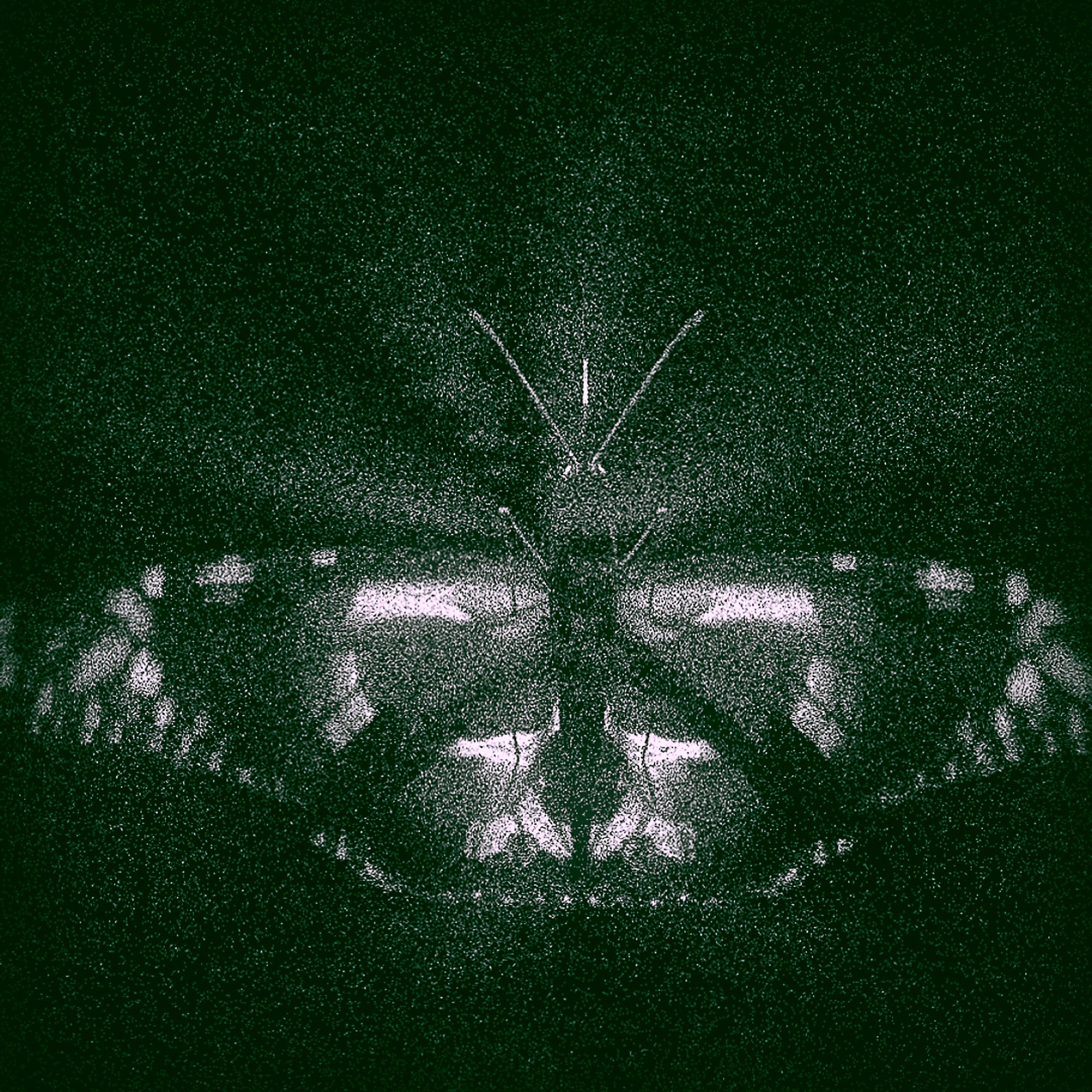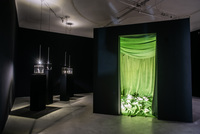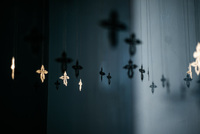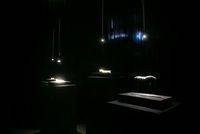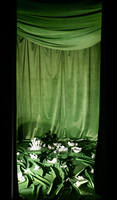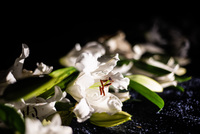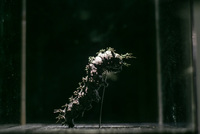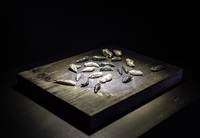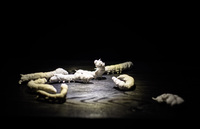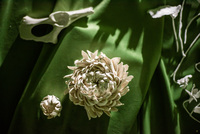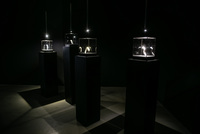The first experience of death was romantic, even oneiric - recalled years later it brings to mind Ophelia from Millais’s painting. The second time, the experience of the corpse was quite different. A body in a state of severe decomposition had already been taken over by nature: insects ate the face, larvae nested under the skin. The strong smell of decay could not be compared with any known odour.
Although both visions of death, the romantic and naturalistic one, are present in Lena Achtelik's art, it is more dominated by references to the symbolic dimension related to the ontology of the dead body, including such issues as materiality, spirituality, metamorphosis ad references to the narratives of cabinets of curiosities, funeral rituals, presence and absence. One cannot but observe that the works have been inspired by language, literature, ancient art and the ways of cultivating and depicting death throughout the ages.
In her exhibition at the Kronika CCA, the artist focuses on the symbol of the butterfly and its references to death, generated by its final character and visible in rituals, imagery, analogies and social interactions. The butterfly is one of the archetypes primarily concerned with transition and transformation that can shed light on certain patterns of behaviour. Like a child who catches butterflies, the artist catches passing meanings, referring to the curatorial practice of Georges Didi-Huberman and his theory of glimpses (flashes, snapshots). The exhibition that follows is based on momentary impressions gained from reading three essays by Virginia Woolf: "Death of a Moth" - dedicated to the struggle between life and death that Woolf experienced when contemplating suicide, "Butterflies and Moths: Insects in September" with its recollection of catching butterflies, a mnemonic image of a time gone by, synonymous with nostalgia, and "Oxford Street Tide" with the reflection on the impermanence and momentary nature of existence.
In her sculptures she refers to the process of palingenesis, the continuous rebirth of life, the alchemical transformation of one substance into another and the changing of state through the necessary destruction and decomposition of matter. As a result of Achtelik's use of bone porcelain, which is a mineral and organic building block, animal ashes become imitations of both living organisms and their remains. The concept of palingenesis may also refer to the museum as a place where real or symbolic killing, de-functioning, restoration and petrification take place for the purpose of creating a collection.
The naive question: “Are there as many butterflies now as there were when we were children?” posed by Virginia Woolf is not only a reflection on the passing of time and the change in the way we see and perceive the continuous circulation of matter in nature. Butterflies caught in childhood give us the first experience of the transience and elusiveness of beauty, but also the first experience of inflicting death. On the other hand, there can also be a literal interpretation: in the county of Suffolk in Great Britain, 42% of butterflies species were extinct by the end of the nineteenth century. Butterflies are the first to react to adverse changes in the environment. Consequently, their fate may be a clue and premonition of our own doom.
Lena Achtelik (1989) - graduate of the Academy of Fine Arts in Katowice, she received her diploma with honours in 2016. She is currently a doctoral student at her alma mater. As a scholarship holder she participated in the Erasmus+ programme at the Royal Academy of Fine Arts in Antwerp (Belgium, 2014/2015). She lives and works in Katowice. His artistic activities include painting, art books and objects. Her main field of activity is in the fields of thanatology, cultural memory and the history of symbols. Her works were presented, among others, at the Museum of Modern Art in Warsaw, the Museum of Contemporary Art MOCAK in Krakow, the Bielska BWA Gallery, the Rondo Sztuki Gallery in Katowice, the BWA Gallery in Katowice, the Potencja Gallery in Krakow, the Wozownia Art Gallery in Toruń, the BWA Gallery in Wrocław, the Arsenał Gallery in Poznań and the Wallenberg-Pachalych Palace in Wrocław.
- Exhibition
- 10 April ‒ 28 May 2021
- artist: Lena Achtelik
- curator: Agata Cukierska
- collaboration: Katarzyna Kalina
- photography: Julia Pałkowska
